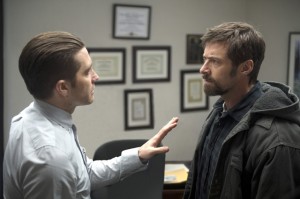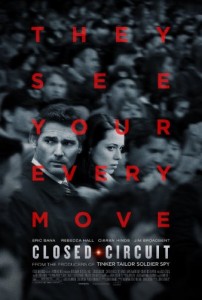Captain Phillips
Posted on October 10, 2013 at 6:00 pm
B+| Lowest Recommended Age: | High School |
| MPAA Rating: | Rated PG-13 for sustained intense sequences of menace, some violence with bloody images, and for substance use |
| Profanity: | Strong language |
| Alcohol/ Drugs: | Drugs |
| Violence/ Scariness: | Intense, graphic, and disturbing violence including threats, torture, and guns |
| Diversity Issues: | Diverse characters |
| Date Released to Theaters: | October 11, 2013 |
| Date Released to DVD: | January 21, 2014 |
| Amazon.com ASIN: | B008JFUNKU |
 Memorable movie villains tend to fall into two categories: volatile and violent or sociopathic and megalomaniac. Both kinds are caricatures, sketched in exaggerated terms to justify our feeling of triumph when the hero prevails. But in “Captain Phillips,” the true story of a US merchant ship taken over by Somali pirates, the villain is far more real and far more terrifying. Somali native Barkhad Abdi stars as Abduwali Abdukhadir Muse, the leader of a group of four teenagers sent to hijack ships for ransom money by elders in their village. Muse is the scariest of villains, someone with no other options and nothing to lose. Abdi’s performance in his first acting role is stunning, terrifying, and heartbreaking.
Memorable movie villains tend to fall into two categories: volatile and violent or sociopathic and megalomaniac. Both kinds are caricatures, sketched in exaggerated terms to justify our feeling of triumph when the hero prevails. But in “Captain Phillips,” the true story of a US merchant ship taken over by Somali pirates, the villain is far more real and far more terrifying. Somali native Barkhad Abdi stars as Abduwali Abdukhadir Muse, the leader of a group of four teenagers sent to hijack ships for ransom money by elders in their village. Muse is the scariest of villains, someone with no other options and nothing to lose. Abdi’s performance in his first acting role is stunning, terrifying, and heartbreaking.
An awkward opening scene shows Captain Phillips (Tom Hanks) is at home in Vermont, preparing for his trip and driving to the airport with his wife (Catherine Keener), with some clunky, exposition-heavy dialog intended to foreshadow upcoming unrest. Once he gets to the boat, called the Maersk Alabama, director Paul Greengrass locks into the taut, intimate style he showed in “United 93” and two Bourne movies. The ship has a crew of 20. They have been warned about the possibility of pirates and have had some training in how to respond. Phillips orders a surprise drill to make them practice their defensive tactics. But this is not a military ship. They are carrying 17 metric tons of cargo. Their primary tactics are diversion and their primary weapons are their firehoses.
At first, the firehoses work. But then the Somalis get close enough to the ship to attach their ladder and climb aboard. “I’m the captain now,” says Muse. His lack of affect is chilling.
Director Paul Greengrass has an intimate, documentary style that keeps even those who remember the details of the real story on edge. The pirates search the ship, looking for the crew like a nightmare game of sardines. Phillips leads them around, genial and cooperative on the surface, but always thinking about how to impede them without making them angry. When their boat is destroyed, they take one of the lifeboats, more like a capsule than a ship, and they take Phillips as hostage. For four grueling days, Phillips has to try to keep calm and do what he can to help the US Navy, which is assembling its response. Hanks goes deeper than he ever has before, ultimately reaching a place of wrenching vulnerability.
After a shaky start, Greengrass and his talented cast make this into more than a story of courage and resilience. While he clearly has a point of view and never pretends that the pirates are justified, he allows us to understand their desperate circumstances.
Parents should know that this is the true story of a pirate attack on a US ship, featuring intense and disturbing scenes of threats, torture, and violence with some graphic images and dramatic emotional breakdown.
Family discussion: What was Captain Phillips’ most difficult decision? What was the most difficult decision for the US military in responding to the pirates? Do you disagree with any of their actions?
If you like this, try: “United 93,” another true story from the same director and Captain Phillips’ book, A Captain’s Duty: Somali Pirates, Navy SEALS, and Dangerous Days at Sea




